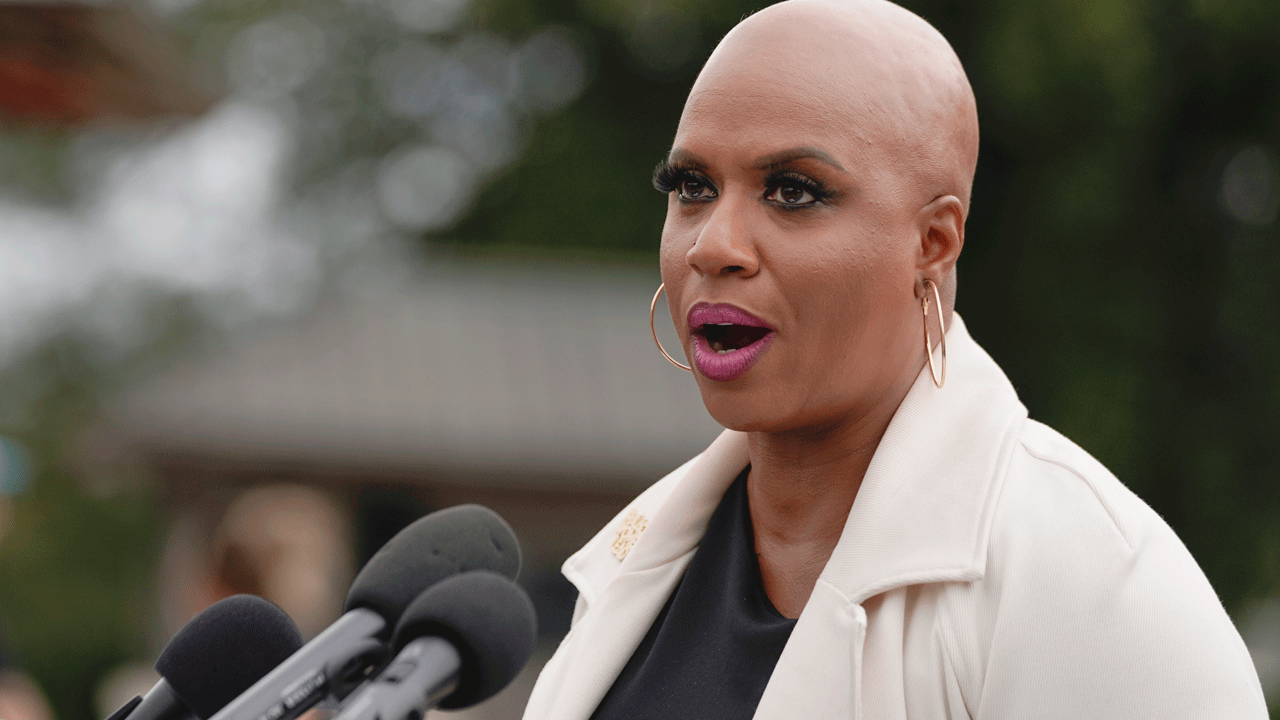Nature Reviews Psychology, an imprint of the prestigious Nature publishing group, announced in October that it was “explicitly encouraging” authors to include a “citation diversity statement” in their articles. The statement would affirm that they had made an effort to cite from “a diverse group of researchers” and acknowledge “citation imbalances” based on race and gender.
“[R]esearchers can move scholarship away from narratives that perpetuate societal biases by writing inclusively,” an editorial in the journal read. “[W]e hope that encouraging authors to think about citation diversity will prompt them to engage in concerted and sustained efforts to educate themselves about the relevant work of underrepresented scholars.”
The policy was the last straw for the renowned chemist Anna Krylov, a professor at the University of Southern California and a member of the American Academy of Arts & Sciences, who wrote an open letter to Nature stating that she would no longer engage with the group’s journals.
Krylov grew up in the Soviet Union and has been warning about the politicization of science since 2021. In her letter to Nature, she said that the journal had “institutionalized censorship,” “sacrificed merit,” and “injected social engineering” into the publishing process, citing a litany of diversity policies that were “antithetical to the production of knowledge.” As a result, she said, “papers published in Nature journals can no longer be regarded as rigorous science.”
The Washington Free Beacon spoke to Krylov about her decision to boycott Nature and the state of science more generally. During the interview, which has been edited for length and clarity, Krylov discusses how Nature’s DEI policies resemble Soviet efforts to control science, why sexism is no longer a big problem in STEM, and why the Trump administration’s cuts to science funding are, as she puts it, a “mixed bag.”
Aaron Sibarium: You recently announced that you would no longer engage with Nature Publishing Group, neither as an author nor a peer reviewer. Why?
Anna Krylov: It just reached a point where I couldn’t take it anymore. The reason was the ideological creep that’s been happening for years—it finally got to a level I couldn’t tolerate.
I’ve experienced this creep directly. At one point, a publisher gave us what were essentially censorship guidelines. Another publisher asked me to sign an editorial contract that explicitly stated the editor would “endeavor to promote diversity, equity, and inclusion in the editorial process” and “ensure the best possible diversity, equity, and inclusivity in the editorial board, reviewer pool, and authorship.”
I refused to sign. We went back and forth for quite a while, and eventually, they removed this clause from the contract. It wasn’t a public victory, but it was still an important one.
I was very concerned about this idea—that we should keep diversity in mind when selecting reviewers. To me, that’s anti-scientific. We should select reviewers based on competence, not on gender, race, or nationality. It’s insulting to think of reviewers as “female reviewers” or “Chinese reviewers.”
When it comes to Nature, they’ve really outdone everyone else. They’re leading the race to the bottom.
They’ve had a “diversity pledge” since 2019—it’s not new—in which they say they will promote diversity at any cost across all domains.
Recently, they published a new unsigned editorial where they said they were committing to “citation justice.” They invited authors, on a supposedly voluntary basis, to include “citation diversity statements,” and they even gave examples of what those should look like.
Not long after that, I was invited to review a paper where the editor explicitly referred to this diversity pledge as policy. At that point, I thought, “I just can’t be part of this circus anymore.”
AS: Since then, Nature has said that the citation diversity statement is optional. What’s your response to that?
AK: They didn’t say that to me directly. They told it to the Telegraph. To me, that response is vacuous and disingenuous.
When they call something “purely voluntary,” I know what that means. I grew up under a totalitarian regime. I know what “voluntary” means in Orwellian speak.
How can I trust that they won’t use these “voluntary” statements in manuscript evaluations, when they’ve already declared how important DEI is and how everyone should “make an effort to advance this agenda”?
They also didn’t address my concerns about censorship. You might think censorship isn’t that relevant to chemistry—that it matters more in politically charged fields—but even in chemistry, it’s happening, and I’m not willing to overlook it.
So no, I don’t find Nature’s response reassuring.
AS: What examples of censorship do you have in mind?
AK: One case from chemistry comes to mind. The Journal of Chemical Education published a paper a couple years ago that honestly sounded like a hoax. It was about using STEM education to confront “dysconscious racism in STEM.”
The paper described a real class that included such gems as: “to problematize time as a linear social construct, a Copenhagen interpretation of quantum mechanics has been used.” You read it and think, “This can’t be real.”
Two educators from Florida International University were disturbed by this and decided to write a comment pointing out flaws in the paper: problems with the assessment methods, the pedagogy, and so on. That’s standard practice in science—if you find flaws in a paper, you write a comment, it goes through peer review, and it gets published.
But the editor resisted. I know this because I was one of the reviewers of their comment. The editor even tried to censor my report, which is bizarre—reviewers’ reports are private, and we can say whatever we think. Eventually, the comment was published, but in a heavily redacted form. It was a form of soft censorship.
There’s an even more dramatic example from physics. A few years earlier, Physical Review Physics Education Research published a loony paper titled “Observing whiteness in introductory physics: a case study.” The authors claimed to find evidence of white supremacy in the fact that classroom discussions were centered around the whiteboard.
A group of physicists wrote a detailed critique of the paper, but they weren’t able to get it published in the same journal. They eventually posted their correspondence with the journal on arXiv and later published their story in European Review. The editor’s [of Physical Review Physics Education Research] final response said that their critique was written from a different “research paradigm”—meaning they criticized the paper using the scientific method, while the original paper used a critical race theory framework. The editor said the critics should first “accept the paradigm of the authors” before offering criticism.
That’s like telling astronomers they have to accept astrology as true before they’re allowed to critique it.
AS: You mentioned earlier that you grew up in the Soviet Union. In 2021, you wrote an essay that compared the politicization of science at the height of wokeness to the politicization of science that occurred in the USSR. Elaborate on that comparison.
AK: That was a feeling I first started having around 2020 or 2021. It felt eerily familiar. You’d open an email or a professional newsletter and see slogans, ideological claims, and demands coming from your university or your journal.
We were told we teach students “to advance social justice” or “promote anti-racism and gender equity.” You can see it in grant titles—things like “Identifying Systemic Racism in Mathematics Teacher Education,” or “STEM Education Research Through a Social Justice Lens,” or “Assessing the Bioethical Impacts of an Indigenous Scholars Network in Genomics.”
That’s strikingly similar to how science operated in the Soviet Union. Every textbook had a preface explaining how chemistry or physics advanced the cause of the proletariat and the world revolution. Everything was framed in terms of the struggle between oppressors and oppressed.
We started to see the same trend in the United States, only with slightly different terms. Instead of “world revolution,” it’s “diversity, equity, and inclusion.” Instead of “oppressed classes,” it’s “marginalized groups.” But these concepts can all be mapped to the same concepts we were taught in Russia, because they are all coming from the same Bible. It’s a slightly repackaged form of Marxism.
AS: Many scientists have raised concerns about the Trump administration’s cuts to federal research funding. You’ve argued the cuts are a problem but could also be an opportunity for reform. What’s the strongest argument for the administration’s approach, and what are the problems with it?
AK: It’s a complicated issue—the measures are a mixed bag. Some actions are really damaging to research. Many universities had their funding cut. Some cases are explicit, like Harvard. At other universities, I’ve heard that the invoices for federal grants just stopped being paid without any explicit demands. We expect budget cuts to major funding agencies, and the government shutdown has added even more uncertainty. All this is hugely disruptive. It hurts STEM fields especially—when you lose momentum, students leave, international scholars can’t continue their work, and that’s pretty terrible.
Still, one positive effect of all this is that it’s rattled academia to its core. It’s exposed deep problems and hypocrisy. I mean, how bad must our universities be if the federal government has to remind them to respect the First Amendment, encourage viewpoint diversity, protect women’s spaces, and avoid discrimination in hiring and admissions—and even to use standardized tests again? That’s humiliating, but revealing.
My hope is that universities will take this as a wake-up call and reform themselves. When the dust settles, maybe we’ll have better universities. But yes, I’m still worried about the immediate damage to science.
AS: In your open letter to Nature, you criticized the journal for intentionally reaching out to women researchers. But you’ve also criticized conferences that failed to invite any women. How do you reconcile those positions? If we shouldn’t care about the gender of journal authors, why should we care about the gender breakdown of conferences?
AK: The short answer is that things have changed a lot over the course of my career. When I started, there were fewer women in the field, and the culture was less encouraging. People would say things like, “You’d make a better mother than a scientist.”
Back then, we’d see conferences with 50 speakers and not a single woman, even though maybe 15 percent of the field was female. That didn’t make sense. I’ve always opposed quotas, but when you repeatedly see such imbalances, it raises concerns about unfair treatment of women. Around 2014, two colleagues and I finally spoke out. We petitioned one conference that had no women speakers at all. It was the right thing to do, and I think it helped change attitudes.
Since then, things have improved dramatically. In many fields, we now see parity or even overrepresentation of women. At medical schools, for example, over half the faculty are women. In STEM overall, about half of assistant professors are female. In chemistry around 20 percent of tenure and tenure-track faculty are women—not perfect parity, but a huge improvement.
I’ve been following research on possible biases against women in STEM. A few years ago, a massive meta-analysis by psychologists at Cornell looked at all studies on biases in 6 areas, including hiring, grants, teaching, paper acceptance, and salaries, over about 15 years. They found no evidence of bias against women in five categories. They did find a small bias against women in teaching evaluations, but in hiring, they found strong bias in favor of women. Universities are falling backwards to hire qualified women.
So no, STEM is not riddled with biases against women anymore. We don’t have the problems that were there 20 or 50 years ago.
AS: There’s a longstanding debate about why women are underrepresented in STEM. Some argue it’s primarily due to sexism, while others say women are simply less interested in science—or less likely to be preternaturally gifted at it—than men. Where do fall in this debate?
AK: Three things stand out to me. The first is that sex-specific preferences in occupations are real. Women tend to be more interested in people, and men tend to be more interested in things. Studies with very young children show that when you give baby girls and boys toys—shiny wheeled trucks or soft stuffed animals—baby girls are, on average, more likely to reach for the soft toys, while baby boys, on average, more often reach for the trucks or toy weapons. These patterns do not define individual preferences of course, but they define overall outcomes for the groups.
There are also differences in values and life choices. I recently read a summary of a survey that asked people what they value in their everyday lives and occupations. There were clear sex differences. Men placed greater value on inventing or creating something with a big impact, while women placed more value on giving back to the community, maintaining strong friendships, and having the ability to work part-time.
Is that bad? I don’t think so. It’s ok for people to have different preferences. We should think of these as distributions, acknowledging that there are women who love things and men who care deeply about people. But these tendencies help explain why, despite programs encouraging girls to code or pursue STEM, the influx of women isn’t as large as some expect.
The third point, which can be controversial but is worth considering, is the hypothesis of greater male variability in traits—and there’s data supporting it. In general, for almost any trait, the distribution is wider for men than for women. What does that mean? It means there are more men at the lower end of performance—more men failing math, in prisons, or struggling in school—but also more men at the very high end, pushing the limits of intellectual ability.
If this is true, then in fields like academic research, which select for extremely high cognitive performance, you’d naturally find more men than women.
So what do we do about it? If we accept this hypothesis, do we still want perfect gender parity? Because that would mean, statistically, that the average ability of the female cohort would be somewhat lower than the male cohort. Do we want our physics departments to be 50-50 if it means, on average, having weaker women professors? Or should we accept whatever ratio naturally results—say, 80-20—but knowing that the women who reach that level are every bit as capable as the men?
To me, the answer is simple. It’s far better to accept that natural variation than to chase false parity. Forced social engineering undermines excellence and ultimately harms women. If every woman’s professional success is suspected to be based partly on gender rather than merit, it revives old biases and prejudice—which is precisely what we should want to avoid.
Read the full article here






